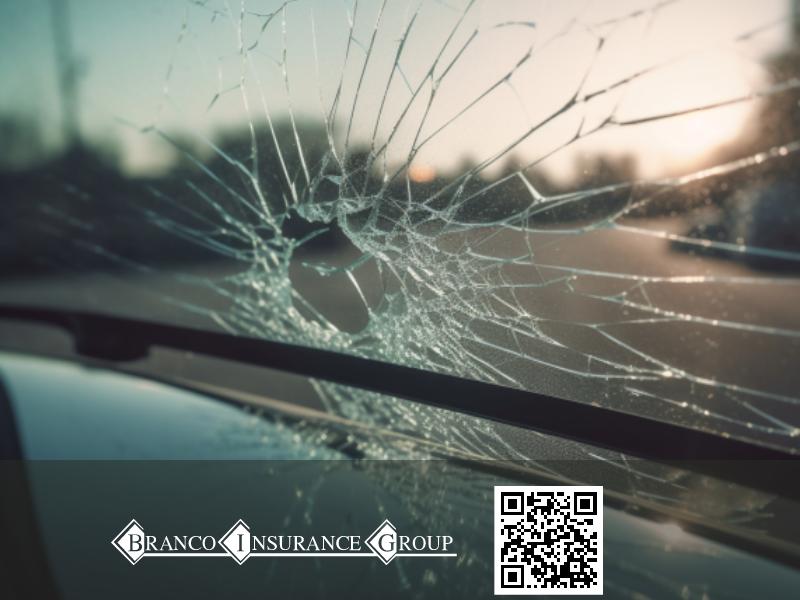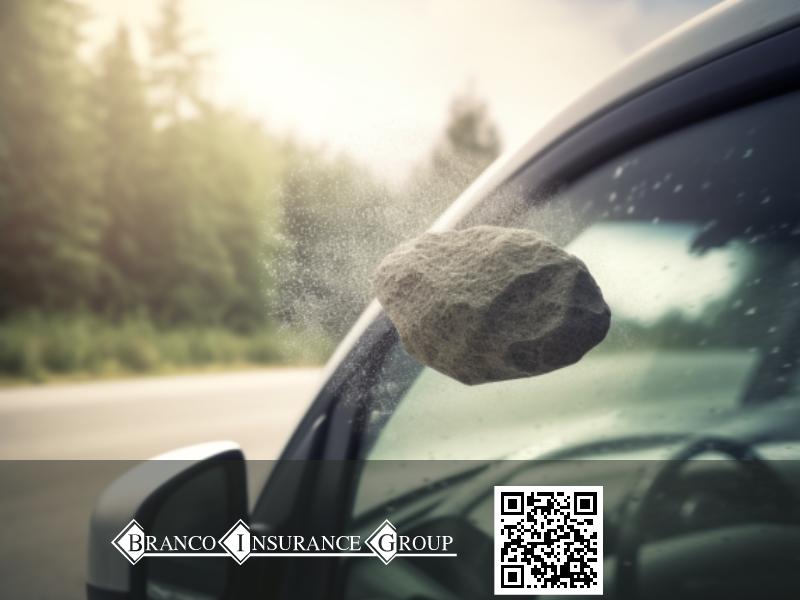
How Employees Can Help Reduce Cybersecurity Risks
Many small businesses conduct themselves directly online. Having employees who are not properly trained in cybersecurity can increase the risk of a cyberattacks. Adequate cybersecurity

Navigating the world of auto insurance can be a complex task, especially when it comes to understanding glass coverage for your vehicle. With various components like comprehensive coverage and full glass coverage, knowing what your policy covers is essential for both your peace of mind and financial planning.
In this blog post, we’ll break down the complexities of glass coverage in car insurance policies, discussing what’s covered, factors affecting coverage costs, and how you can maximize these benefits. Let’s dive into the details to ensure you have proper protection for any unexpected windshield or other auto-glass-related incidents that may come your way!
When it comes to car insurance, understanding the difference between comprehensive coverage and full glass coverage is crucial in determining what types of glass damage your policy will cover.
Comprehensive coverage is a type of auto insurance that provides protection for your vehicle from non-collision-related incidents, such as theft, fire, vandalism, and weather-related damages. It also typically includes coverage for glass damage like windshield cracks or shattered windows. However, comprehensive coverage often comes with a deductible that you must pay before the insurance kicks in to cover the remaining cost of repairs or replacement. For example, if your policy has a $500 deductible and it costs $800 to replace your windshield, you would be responsible for paying the first $500.
On the other hand, full glass coverage is an optional endorsement or add-on that can be added to your comprehensive policy specifically designed to cover all aspects of glass repair and replacement without requiring any out-of-pocket expense on your part. This means that when you have full glass coverage alongside comprehensive insurance policies, there’s no need for deductibles—your insurer will foot the entire bill should any insured glass components suffer damage. Keep in mind, though, this additional level of protection may come with slightly higher monthly premiums compared to just having comprehensive alone. So, deciding between these two types of coverage largely depends on personal preference and budgetary constraints. It’s important to weigh whether saving more money upfront with just comprehensive or investing extra towards peace of mind knowing potential pricey window woes won’t dent one’s wallet further along is best suited for their unique needs as drivers navigate life’s unexpected road bumps ahead.

Each comprehensive and full glass coverage offers different levels of protection for your vehicle’s glass components. To help you understand which coverage may be the best fit for your needs, here is a comparison of what each insurance type covers:
Comprehensive Coverage | Full Glass Coverage |
Covers glass damage resulting from incidents other than collisions, such as weather-related damage, animals, vandalism, and theft. | Covers the repair or replacement of all glass components on your vehicle, including windshields, side and rear windows, and sunroofs, with no deductible or a lower deductible than comprehensive coverage. |
May have a deductible that applies to glass repairs or replacements, depending on your specific policy and insurance provider. | Usually does not have a deductible for glass repairs or replacements, making it ideal for those who want to avoid out-of-pocket costs for glass damage. |
May increase premiums if you file a claim for glass damage, depending on the specific circumstances and your insurance provider’s policies. | Could have a slightly higher premium than comprehensive coverage alone, but offers more extensive protection for your vehicle’s glass components. |
By comparing comprehensive and full glass coverage, you can better determine which option is best suited for your needs and budget, ensuring that you receive the appropriate level of protection for your vehicle’s glass components.
Understanding the differences between comprehensive coverage and full glass coverage can help you make an informed decision when choosing your auto insurance policy. Comprehensive coverage typically covers a wide range of damages to your vehicle, excluding collisions. This includes theft, fire damage, vandalism, natural disasters such as storms or hurricanes, and even encounters with animals. Glass-related damages under comprehensive coverage usually have a deductible applied before the insurance company pays for repairs or replacement.
On the other hand, full glass coverage specifically addresses auto glass repair and replacement without requiring a deductible payment from you – making it an attractive option for many drivers who seek additional protection for their windshields and windows. For example, if your windshield is damaged by a rock hitting it on the highway or by falling debris during a storm, full glass coverage would cover repair or replacement costs without subjecting you to any out-of-pocket expenses. Keep in mind that full glass coverage is an optional add-on that comes with an extra premium cost compared to basic comprehensive policies.
While both comprehensive and full glass coverages provide protection against various types of damages to your car’s glass components like windshield damage or broken windows from theft, they differ in terms of deductible requirements and extent of protection offered. Depending on your individual needs and preferences regarding potential risks associated with auto-glass issues (e.g., cracked windshield due to frequent driving in areas prone to hailstorms), you may opt for either one or both options when customizing your car insurance policy.

Car insurance typically covers all types of glass on your vehicle, including windshields, side windows, rear windows, and even sunroofs.
When it comes to glass coverage, windshields are one of the most commonly covered items. In fact, many insurance policies specifically mention “windshield coverage.” This means that if your windshield is damaged or needs to be replaced, you can file a claim with your insurer to have it taken care of. Comprehensive auto coverage usually covers windshield repair and replacement costs.
However, the level of coverage for windshields may vary depending on where you live and what type of car insurance policy you choose. For instance, some states require insurers to provide full glass replacement for windshields without deductibles or limits. On the other hand, in some states, insurers may only offer a limited amount of windshield coverage as part of their comprehensive policies. Therefore before selecting a policy, check out your state laws if this happens to be important for you.
In addition to windshields, car insurance policies typically cover side windows as well. If your car is broken into or vandalized and the side windows are damaged, your insurance policy may cover the repair or replacement costs. However, it’s important to note that coverage for side windows may differ between policies and providers. Some policies may only cover certain types of damage or have specific exclusions.
To ensure you have proper coverage for all aspects of your vehicle’s glass components, it’s essential to review your policy thoroughly and understand what is covered under your specific plan. If you live in an area prone to break-ins or vandalism, it might be worth investing in more comprehensive glass coverage options. It’s always best to address any chips or cracks on your side windows promptly before they become bigger issues that require complete window replacements.
Rear windows can be just as important to your safety and driving visibility as your windshield, which is why it’s important to understand if they’re covered by your car insurance policy. Most comprehensive coverage policies will cover rear window damage resulting from non-collision events such as theft or weather damage. However, it depends on the specific terms of your policy, so make sure to review it carefully.
If you live in an area prone to extreme weather conditions or have a higher risk of theft, you might consider adding full glass coverage to your policy for additional protection. Keep in mind that this may come with added costs and deductibles that you should factor into your decision-making process. Overall, understanding the extent of glass coverage offered by different types of car insurance policies can help ensure that you’re properly protected on the road.
Sunroofs are often included as part of your car’s glass coverage in your insurance policy. They come in different forms like panoramic, pop-up, or sliding sunroof. If you have full glass coverage, then damage to your sunroof will also be covered. For example, if a tree branch falls on your car and damages the sunroof, full glass coverage will cover the repair or replacement costs.
However, it is essential to note that not all policies cover sunroofs under their glass coverage. So make sure to check with your insurer whether or not yours does. Additionally, some insurance providers may require an additional endorsement for full coverage of sunroofs. Double-checking with them can help you ensure you’re fully covered if something unexpected happens to your car’s sunroof while on the road.
Factors that can have an impact on your glass coverage include deductibles, premiums, coverage limits, and geographic location. Keep reading to find out how these factors can affect your car insurance policy.
Your car insurance premiums and deductibles will have a direct impact on your glass coverage. The deductible is the amount you pay out of pocket before your insurance kicks in, while premiums are the regular payments you make to keep your policy active. Generally, lower deductibles mean higher monthly premiums and vice versa.
For instance, if you’re considering full glass coverage with a $500 deductible and an additional cost of $5-$10 per month on your premiums, it means that before your insurer covers any repair or replacements due to glass damages on your vehicle’s windshield, sunroof, or even side windows during an accident or other situations covered by comprehensive coverage; you would need to pay the first $500.
However, suppose you opt for a higher deductible, like $800 or more; in that case, it would mean paying less out-of-pocket monthly but more when making a claim for repairs or replacement.
Ultimately what premium/deductible balance works best for you will depend on how much risk (financially) and comfort level with payment schedules work best within budget constraints.
Car insurance policies come with coverage limits that determine the maximum amount that an insurer will pay for glass repair or replacement. These limits vary depending on the policy and the insurer, so it’s essential to check your policy’s terms and conditions to know exactly what is covered. For example, some policies may only cover windshield damage, while others include all windows and sunroofs.
Another factor affecting coverage limits is deductibles. This is the amount you have to pay out-of-pocket before your car insurance kicks in. So if you have a $500 deductible, you’ll need to pay that first before receiving any payment from your insurer. It’s important to note that choosing a higher deductible could reduce your premiums but also means paying more upfront when making a claim.
Overall, understanding coverage limits is crucial when getting glass coverage for your car, as it can impact how much of the cost of repairs or replacements will be paid by your insurance provider. Always review your policy carefully and talk with an agent if there are any questions regarding limitations or exclusions in coverage.
The geographical location of your residence can also play a role in the type of glass coverage you may need. Living in areas prone to severe weather conditions or high rates of vehicle theft may require more comprehensive coverage that includes all types of car windows, including side and rear windows and sunroofs. For instance, living in states like Texas, where hailstorms are common, may increase your chances of filing a claim for windshield damage caused by falling hailstones. That said, it’s crucial to review your insurance policy annually to ensure you have the proper coverage that addresses all potential risks associated with your location.
Moreover, state laws regarding auto insurance vary significantly from one state to another. Some states require insurers to cover full windshield replacement without any deductibles, while others allow insurers to charge higher premiums for comprehensive glass protection. It’s essential to know the specific requirements set forth by your state when purchasing car insurance, as this information will guide you on what kind of coverage is legally required for drivers in your area. Understanding these legal realities will help customers select an appropriate level of coverage while remaining compliant with local regulations.
To make sure you get the most out of your glass coverage, it is important to review your policy and address any damages early. By choosing a reputable repair shop and being aware of potential exclusions or limitations, you can ensure that you are properly covered in case of any glass-related issues. Keep reading to learn more about how to maximize your car insurance’s glass coverage benefits!
It’s important to review your car insurance policy to understand the glass coverage it provides. Here are some key things to consider when reviewing your policy:
Reviewing your policy can help you make informed decisions about getting the right glass coverage for your vehicle and avoiding surprises when filing a claim.
If you notice any chips or cracks in your car’s windshield, it’s crucial to address them early on. Waiting too long may result in the damage spreading and causing a more severe problem, leading to an expensive replacement. Furthermore, driving with a damaged windshield can be dangerous as it impedes your visibility while driving.
Opting for comprehensive glass coverage will allow you to file a claim whenever there is any issue with your car’s glass, including small chips or cracks. This coverage usually includes repair services that are completed as quickly as possible so that minor issues don’t turn into major ones that require costly replacements.
Taking this proactive approach when dealing with windshield damage not only ensures your safety but also saves you money and time by avoiding further damages and repairs down the line.
When getting your windshield repaired or replaced, it’s important to choose a reputable repair shop. Some insurance providers may have preferred shops that they work with, but you also have the option of choosing your own. Look for shops that are certified by organizations like the National Glass Association or Automotive Service Excellence (ASE) to ensure that they meet industry standards.
It’s also a good idea to check reviews and ratings from other customers before making your decision. A quality repair shop will use high-quality materials and provide a warranty on their workmanship. Choosing an unreliable or inexperienced shop may result in poor-quality repairs, which could compromise your safety on the road and lead to additional expenses down the line.
For example, if you live in South Carolina and experience damage from rock hitting your windshield while driving down Interstate 85, look for repair centers within state laws advertising expertise in repairing small chips in windshields at no cost as mandated by state law.
It is important to be aware of the exclusions and limitations of your car insurance policy when it comes to glass coverage. For example, some policies may not cover damage caused by intentional acts or racing incidents. Additionally, there may be restrictions on where you can get your glass repaired or replaced, with some insurers requiring that you use their preferred providers.
Another limitation to keep in mind is the maximum coverage amount for glass claims. While comprehensive coverage will generally cover the full cost of repairs or replacement, there may be a cap on how much the insurer will pay out. It’s worth reviewing your policy carefully to ensure that you understand these limits and aren’t caught off guard if you need to file a claim for a large amount.
For example, let’s say that your windshield is damaged by hail during a storm and needs to be replaced at the cost of $800. If your policy has a maximum coverage limit of $500 for glass claims, then you’ll need to pay the remaining $300 out-of-pocket. By being aware of these limitations upfront, you can make informed decisions about whether additional coverage options are necessary and avoid any unpleasant surprises down the road.
Understanding glass coverage in your car insurance policy is crucial for protecting yourself and your vehicle. With comprehensive and full glass coverage options available, it’s essential to know the differences between them and what kind of glass they cover.
Maximizing your coverage means reviewing your policy, addressing cracks and chips early, choosing a reputable repair shop, and being aware of any exclusions or limitations. By taking these steps, you can ensure that you have proper coverage for all types of glass damage that may occur on the road.
Please don’t wait until it’s too late. Make sure you understand your car insurance policy’s glass coverage today! If you have any more questions about glass coverage or if you have any other auto insurance questions our insurance experts at Branco Insurance Group can help.
We’re here to help you choose the best coverage options for your car insurance policy. Get in touch with us now and let’s get started!
It depends on the coverage you have selected in your policy. Some policies may only cover damages caused explicitly by accidents, while others may also include protection against theft, vandalism, and weather-related incidents.
This again depends upon the specifics of your policy, but typically most auto insurance plans will require some sort of deductible payment before any coverage can be applied toward repairs or replacements.
Policyholders generally have some flexibility in choosing where to complete necessary repairs as long as those service providers are approved by their carrier and meet specific standards related to transparency, professionalism, and experience.
If there is a visible crack, chip, or another form of serious damage, it is highly recommended that drivers get these issues addressed quickly through either professional repairs (e.g., filling in cracks with resin) or replacing windshields completely when necessary depending upon severity and location relative driver's view while operating vehicle safely on roads. Ignoring damaged auto glass can not only negatively impact visibility while driving but also result in further harm across larger portions of automotive components over time, leading to inevitable safety risks that could jeopardize lives behind the wheel and other passengers traveling around them every day!

Many small businesses conduct themselves directly online. Having employees who are not properly trained in cybersecurity can increase the risk of a cyberattacks. Adequate cybersecurity

Because seasonal changes affect your vehicle in a multitude of ways, it’s important to prepare for the transition from summer to fall. You’ll want to
